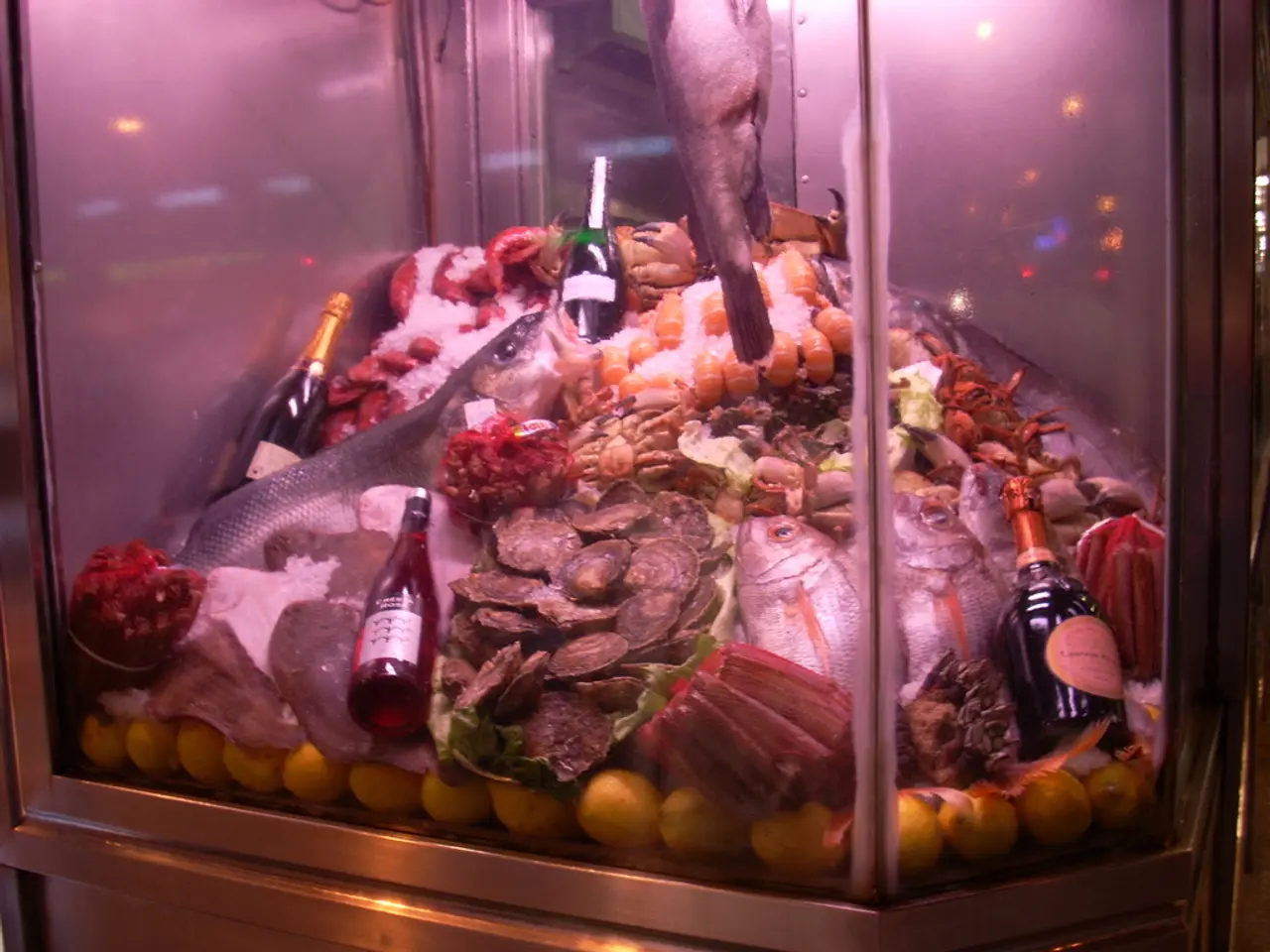Navigating Restaurant Inventory Management
In the bustling world of the restaurant industry, effective inventory management is crucial for success. By implementing strategic practices and tracking key performance indicators (KPIs), restaurants can improve efficiency, reduce waste, and boost profitability.
## Top Practices for Inventory Management
1. Regularly counting inventory is essential to maintain accuracy. Daily spot-checks for high-cost or fast-moving items, combined with weekly full counts, help maintain consistency and reduce discrepancies.
2. Implementing the First-In, First-Out (FIFO) method ensures older products are used before newer ones, reducing the risk of spoilage and waste.
3. Proper portion control is vital in preventing over-portioning, which can lead to waste and inefficiency. Training kitchen staff to use scales or measured scoops can help achieve this.
4. Keeping a tab on vendor price changes allows restaurants to adjust orders or renegotiate prices, helping maintain profitability.
5. Utilizing digital inventory tools can automate tracking, update inventory in real-time, and flag anomalies, making the process more efficient.
6. A clean and organized storage area, clearly labeled with items and expiration dates, makes counting easier and reduces waste from expired items.
## Key Performance Indicators (KPIs)
1. The Inventory Turnover Ratio measures how often inventory is used and replaced within a given period. A higher ratio indicates efficient inventory management.
2. Cost of Goods Sold (COGS) tracks the direct cost of producing the goods sold by your restaurant. Monitoring COGS helps understand how effective your inventory management is.
3. The PAR (Period Automatic Replacement) Level determines the optimal amount of inventory to keep on hand based on demand forecasts, helping reduce waste and unnecessary costs.
4. Waste Management tracks waste, such as spoilage or over-portioning, to identify areas for improvement in inventory utilization.
5. Operational Efficiency Metrics, like table turnover rate, can indirectly influence inventory management by optimizing seating capacity and revenue.
By implementing these practices and monitoring these KPIs, restaurants can significantly enhance their inventory management, leading to improved efficiency, reduced waste, and increased profitability.
Miscalculating inventory needs can lead to an overall decline in net profit for restaurants. Therefore, it is essential to invest in an inventory management system, such as Rapid Bar's app, which offers complete paperlessness, integration with various POS systems, real-time updates on inventory levels, and easy communication with suppliers for restocking.
Data collected on inventory, including ingredient usage, daily sales, and expenditure, should be used to make informed decisions for future operations. Training employees on inventory management and usage is crucial to prevent loss of revenue.
Using an inventory management app like RapidStock can save up to 80% of time spent on inventory management. Restaurants should perform inventory checks at least once a week to account for fast-spoiling ingredients.
In conclusion, a well-managed inventory system is vital for restaurants to efficiently manage their supply chain and provide fresh food to customers. By implementing effective practices and monitoring key performance indicators, restaurants can save money, reduce waste, and boost profitability.
Incorporating a food-and-drink-focused lifestyle, cooking with precision becomes essential for enhancing the home-and-garden dining experience. By maintaining regular inventory counts for ingredients, implementing the First-In, First-Out method, practicing portion control through precise measurements, and utilizing digital inventory tools, home cooks can efficiently manage their pantry and reduce waste. In analyzing their KPIs, home cooks can understand the cost of their goods sold, inventory turnover ratio, PAR levels, waste management, and operational efficiency to optimize their food-and-drink management, leading to better meal preparation and reduced waste.




